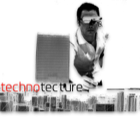Tutorial: ARAD - Augmented Reality Aided Architecture
Augmented Reality (AR) has the promise to let designers use the built environment as a canvas. Combining real and virtual might has its on set of challenges especially when applied to design or architecture in particular. This workshop we will have two parts. The first part will span from the theoretical background of computer vision, special topics of computer vision in AR to basics of Human Computer Interaction (HCI) to allow the participants to understand and exploit AR for the design process itself or for making design accessible. The second part will allow the participants to apply their gained knowledge with some hands-‐on experiences using state of the art AR technology. Goal here will be to design a simple “review” tool.
Part 1
- Introduction of Augmented Reality
- Definition, Taxonomies, Background
- AR Technology (Glasses, Mobile, Projectors)
- Sensor Input
- Computer Vision
- Real-time constraints
- Pattern recognition
- Tracking
- Pose Estimation
- Computer Vision with AR
- Visual vs. Spatial Registration
- Novel Methods such as SLAM -‐ Visualization in AR
- Coherent Rendering Methods
- Screen vs. Model space
- Multi-‐perspective Rendering
- Human Computer Interaction in AR
- Modalities
- Direct, TUI
- Gaze, Props and Mediators
- Introduction Collaborative AR
- Latest Development in AR
- Depth Cameras
- Light Estimation
Part 2
The second part will be mostly hands on. We will have a short introduction into some math necessary to understand a few 3D graphics concepts such as Homography, Model vs. Projection Matrices etc. pp. Goal is to build an interactive viewer for design reviews. This will combine some basic drawings with a handheld AR visualization tool. Participants will learn about the practical aspects of computer vision, real-‐time constraints and user interaction.
Venue
When
Thursday Sep 27, and Friday Sep 28 2012
Format
Thursday Sep 27
11.00 - 13.00
14.00 - 17.00
Friday Sep 28
11.00 - 13.00
14.00 - 17.00
Where
ROTUNDE Lecture Hall
Enrique-Schmidt Str. 5., University of Bremen
Thursday Sep 27, and Friday Sep 28 2012
Format
Thursday Sep 27
11.00 - 13.00
14.00 - 17.00
Friday Sep 28
11.00 - 13.00
14.00 - 17.00
Where
ROTUNDE Lecture Hall
Enrique-Schmidt Str. 5., University of Bremen
About the Presenter: Hartmut Seichter

Hartmut is an architect turned computer scientist. He specializes in the design and development of novel interaction techniques with emerging technologies. His expertise spans from Augmented Reality (AR) to Virtual Reality (VR), Human-Computer Interfaces (HCI), Computer Vision, Telepresence and Mechatronics. Hartmuts' vision is to fuse these technologies to design the next generation of digital design tools.
He holds a degree as Diplomingenieur from Bauhaus University Weimar and a PhD from The University of Hong Kong. Before joining the CDL he worked for four years as a Postdoctoral Research Fellow at the Human Interface Laboratory New Zealand (HIT Lab NZ). His research interests are novel interaction techniques for digital design, affective computing and general topics of HCI, VR and AR. During his time at the HIT Lab NZ Hartmut was in charge for the New Zealand FRST funded projects that involved EU partners such as MARCUS (FP7), Eurasiapac (FP7) and CALLAS (FP6). Furthermore, he was responsible for the HIT Lab NZ involvements with industry partners such as wowwee Home Robotics, Disney / Walden Media and Qtero Pateo. He was furthermore an associate developer for ARToolworks, leading the development of osgART and related projects. At the CDL for Handheld AR he is responsible for research topics in the area of HCI and is taking care of organizational issues.


